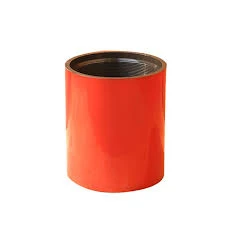- Afrikaans
- Albanian
- Amharic
- Arabic
- Armenian
- Azerbaijani
- Basque
- Belarusian
- Bengali
- Bosnian
- Bulgarian
- Catalan
- Cebuano
- Corsican
- Croatian
- Czech
- Danish
- Dutch
- English
- Esperanto
- Estonian
- Finnish
- French
- Frisian
- Galician
- Georgian
- German
- Greek
- Gujarati
- Haitian Creole
- hausa
- hawaiian
- Hebrew
- Hindi
- Miao
- Hungarian
- Icelandic
- igbo
- Indonesian
- irish
- Italian
- Japanese
- Javanese
- Kannada
- kazakh
- Khmer
- Rwandese
- Korean
- Kurdish
- Kyrgyz
- Lao
- Latin
- Latvian
- Lithuanian
- Luxembourgish
- Macedonian
- Malgashi
- Malay
- Malayalam
- Maltese
- Maori
- Marathi
- Mongolian
- Myanmar
- Nepali
- Norwegian
- Norwegian
- Occitan
- Pashto
- Persian
- Polish
- Portuguese
- Punjabi
- Romanian
- Russian
- Samoan
- Scottish Gaelic
- Serbian
- Sesotho
- Shona
- Sindhi
- Sinhala
- Slovak
- Slovenian
- Somali
- Spanish
- Sundanese
- Swahili
- Swedish
- Tagalog
- Tajik
- Tamil
- Tatar
- Telugu
- Thai
- Turkish
- Turkmen
- Ukrainian
- Urdu
- Uighur
- Uzbek
- Vietnamese
- Welsh
- Bantu
- Yiddish
- Yoruba
- Zulu
Optimization of Tubing Coupling Techniques for Enhanced Performance and Durability
Coupling for Tubing Importance, Types, and Applications
In the field of tubing and piping, coupling plays a crucial role in ensuring seamless connections between various segments of pipe systems. Couplings are mechanical devices that connect two pieces of tubing, allowing for the flow of fluids and gases, while helping to maintain pressure and prevent leaks. This article delves into the importance, types, and applications of couplings in the tubing industry.
Importance of Couplings
Couplings serve several essential functions in tubing systems. Firstly, they provide a secure connection to ensure that the integrity of the tubing is maintained throughout its operational life. A well-designed coupling can effectively withstand high pressures and temperatures, which are common in many industrial applications. This reliability is vital for preventing leaks, which can lead to safety hazards, environmental concerns, and significant economic losses.
Moreover, couplings allow for flexibility in the design of piping systems. They enable easy assembly and disassembly, which is beneficial for maintenance and repairs. In areas where tubing must be routed around structural obstacles, couplings provide the necessary adaptability to make complex configurations possible without compromising performance.
Types of Couplings
There are several types of couplings available, each designed for specific applications and tubing materials. The most common types include
1. Threaded Couplings These couplings feature threads on both ends, allowing them to be screwed onto the tubing. They are widely used in applications that require high pressure and are generally easy to install. However, they can be difficult to disassemble, which may pose challenges during maintenance.
2. Welded Couplings Often used in high-pressure applications, welded couplings are fused directly to the tubing. This creates a permanent connection that is extremely strong and leak-proof. However, this type of coupling requires specialized skills and equipment to install, making it less convenient for maintenance.
coupling for tubing

3. Clamp Couplings These couplings use a clamp mechanism to hold the ends of the tubing together. They are quick to install and can be disassembled easily, which makes them an excellent choice for temporary connections or systems that require frequent maintenance. However, they might not be suitable for high-pressure applications.
4. Flanged Couplings Flanges comprise flat pieces of material attached to the ends of the tubing, allowing them to be bolted together. This type of coupling is popular in large-diameter piping systems and offers a secure and easily serviceable connection.
5. Flexible Couplings These couplings are designed to accommodate misalignment between pipes, thus reducing stress on the system. They are often used in applications where vibration or movement is present, such as in HVAC systems or in machinery.
Applications of Couplings
Couplings find applications across a wide range of industries, including oil and gas, water treatment, chemical processing, and pharmaceuticals. In the oil and gas industry, for instance, couplings are vital for connecting various segments of tubing used in exploration and transportation processes. The ability to handle extreme pressures and corrosive materials makes specialized couplings essential in these environments.
In the water treatment sector, couplings are used in piping systems that transport water to treatment facilities or distribute it to consumers. Ensuring that these systems remain leak-free is crucial for maintaining water quality and preventing contamination.
Furthermore, in the pharmaceutical industry, sterility is paramount. Here, couplings designed to minimize contamination risks while ensuring efficient fluid flow are critical. Manufacturers often utilize high-quality materials such as stainless steel or specialized plastics to ensure their couplings meet stringent regulations.
Conclusion
Couplings play an essential role in the functionality and efficiency of tubing systems across various industries. With a myriad of types available, each designed to meet specific needs, the right coupling can enhance system performance, facilitate maintenance, and ensure safety. Understanding the importance, nuances, and applications of couplings is crucial for anyone involved in the design, installation, or maintenance of piping systems, ensuring seamless operations across diverse applications. As industries continue to evolve, so too will the technologies and materials used in coupling design, highlighting the ongoing significance of this humble yet critical component in the world of tubing.
-
Tubing Pup Joints: Essential Components for Oil and Gas OperationsNewsJul.10,2025
-
Pup Joints: Essential Components for Reliable Drilling OperationsNewsJul.10,2025
-
Pipe Couplings: Connecting Your World EfficientlyNewsJul.10,2025
-
Mastering Oilfield Operations with Quality Tubing and CasingNewsJul.10,2025
-
High-Quality Casing Couplings for Every NeedNewsJul.10,2025
-
Boost Your Drilling Efficiency with Premium Crossover Tools & Seating NipplesNewsJul.10,2025







